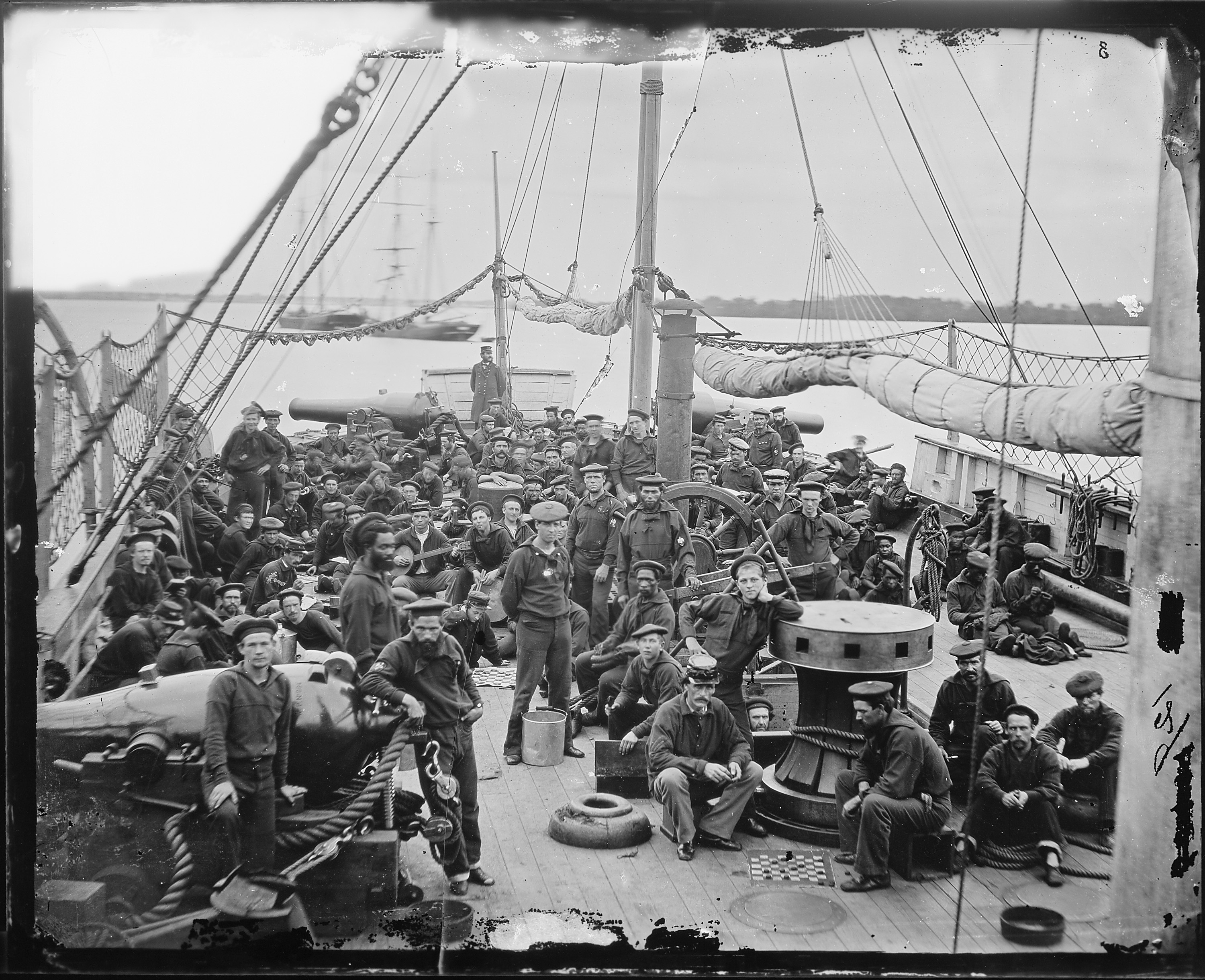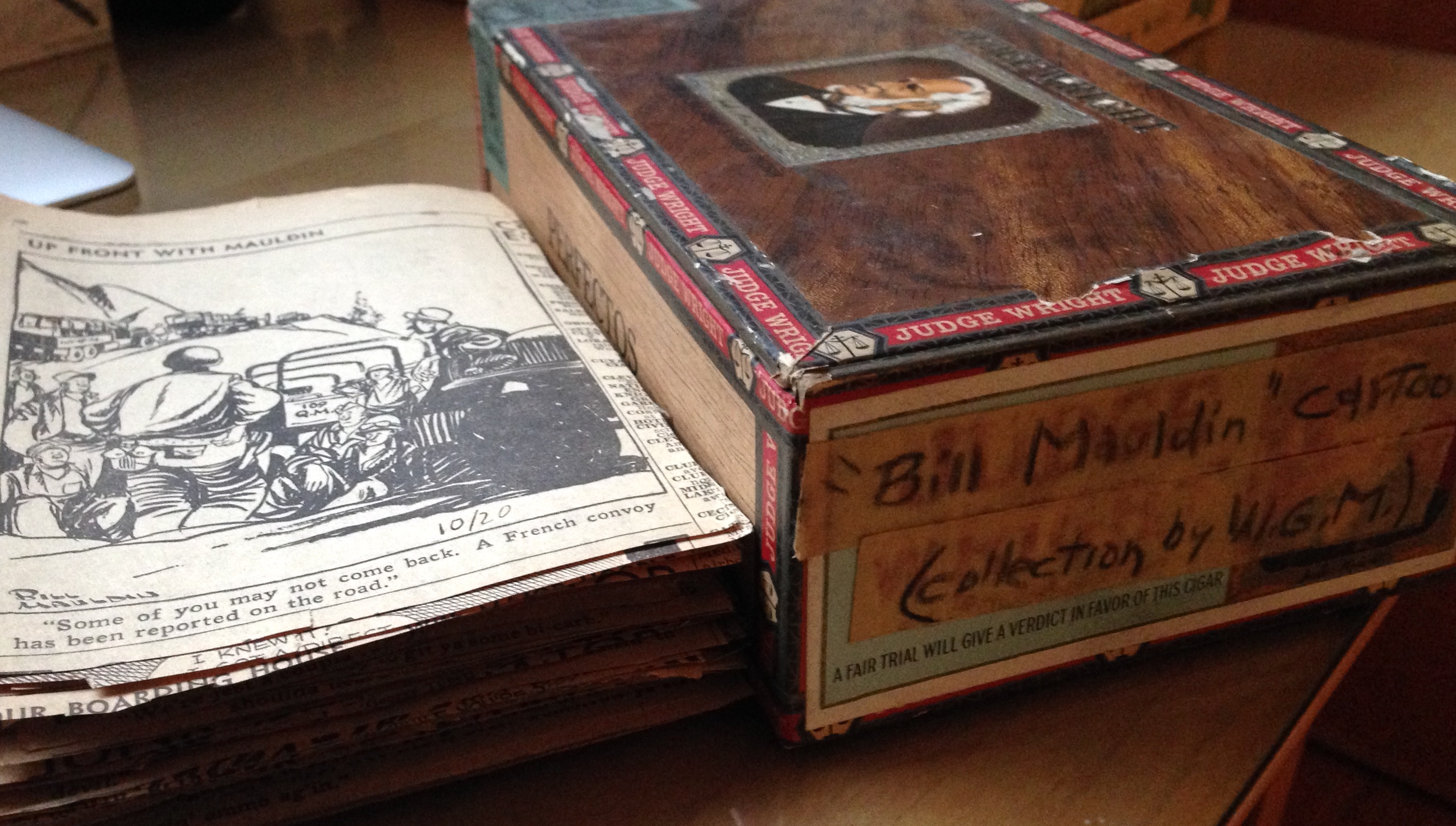Everyday War

Bearded and clean-shaven, grim and smiling, black and white, sailors of the United States Navy assemble on the deck of a gunboat in a nation torn apart by the Civil War. They sit or stand. Some look into the camera, unsmiling. Others turn away, focused on the task at hand. Motion blurs the outlines of a few. Their officer stands on the prow behind them, upright in his double-breasted coat, eyes fixed on the horizon and a cannon at his side. In the foreground sits another cannon, the machinery of war disguised as a prop for casual poses.
Look closely. A five-string banjo is out, and perhaps a tune in the air, though the drummer holds his sticks at rest. Checkerboards lay on the deck, players poised over the next move. A few sailors concentrate on sewing. One man reads a book; another may hold a newspaper, half hidden behind the wheel of the ship. A head peeks out from below deck, furrowed brow surveying the proceedings. The men pose, but the positions they adopt more closely resemble those of a family snapshot than a studio portrait.
A relatively lax approach to military uniforms points to the exigencies of war. Standard issue frocks prevail (we know they are navy blue, though it’s a black and white photograph), complemented by woolen flat hats, some worn at jaunty angles. A couple caps are in evidence, such as that worn by the man leaning over the checkerboard at center. Neckerchief styles vary. A few men have insignia of an eagle and anchor on their left sleeves, indicating their rank as petty officers. The gunner in the foreground has the same patch on his right arm.
The ship is probably the USS Miami. The year could be 1864. The location is a mystery.[1] The officer may be W.N. Wells. The names of the enlisted men who appear are lost to history.[2] The photograph stays mute on those details. Mathew Brady or one of his employees captured the image. We cannot know why was he there or what prompted him to record this scene.
The most striking Civil War photographs tend to stick in our memories: the dead on the battlefields, Lincoln and his generals. Yet photographs of mundane moments like this one – the crew of a gunship passing the time – offer a fuller picture. While artists or illustrators could draw on traditional heroic imagery to portray the heat of battle, the limits of technology constrained photographers. As a result, we see more of the everyday-ness of life (and death) in war. Alan Trachtenberg writes, “the strength of the pictures lies in their mundane aspect – their portrayal of war as an event in real space and time”.[3] This photographer seems to have interrupted a relaxing afternoon. It just so happens the space is a gunboat and the time is a war.
[1] It could be the James River in Virginia as the USS Miami operated there at various times during the war and other photographs of gunboats in Brady’s collection are identified as having been taken there in 1864.
[2] The names of the men who served on the USS Miami are no doubt recorded in some capacity, but we would find it difficult if not impossible to match names to the faces in this photograph.
[3] Alan Trachtenberg, Reading American Photographs: Images as History Mathew Brady to Walker Evans (New York: Hill and Wang, 1989), p.74.


